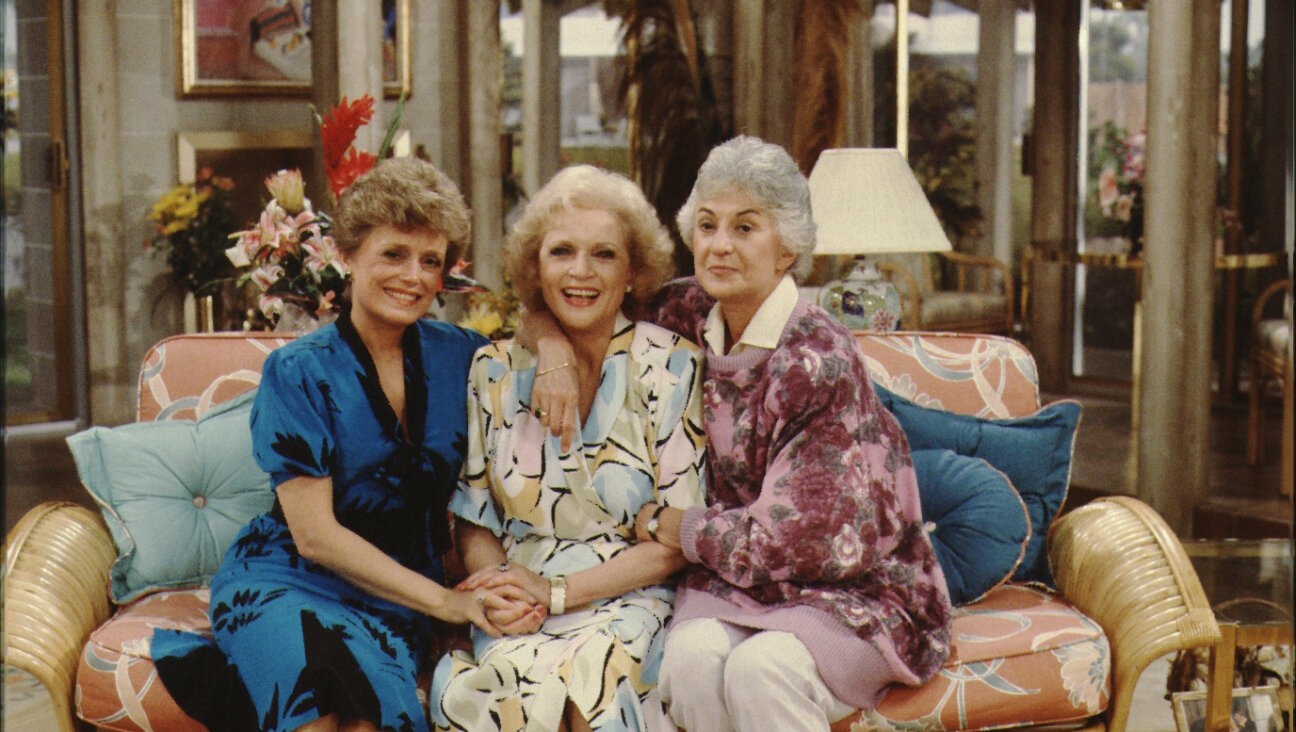An Israeli Designer Embroiders Fashion and Politics
When Americans think of Dizengoff Street in Tel Aviv, they’re likely to think of the circle with the colorful fountain. But for Israeli women-in-the-know, Dizengoff is the shopping area to the far north, where boutiques of top-end Israeli designers line the street. And there is comme il faut, a trendy boutique, café and “concept store,” as Sybil Goldfiner, the politically engaged CEO, likes to say.
The design firm is known for its sophisticated frocks, expensive price tags and political marketing. Its spring 2002 catalog consisted of art photographers photographing themselves in the clothes, including a lesbian couple and a woman draped in renaissance black with a sign that read, “End the Occupation.” The following year, the 2003 spring catalog was a huge poster of Israel’s “Old Girl’s Network,” showing real-life women from politics, entertainment and business as a counter to the old boys’ network that revolves around Israel’s army and is touted as influencing the ability of men to get ahead in their profession while women have a tougher time.
This summer’s line features a joint embroidery project by the firm’s designers and a group of Palestinian seamstresses from Bethlehem. “Fashion and embroidery are the essence of women,” Goldfiner philosophizes. That’s why she embarked on the controversial project called “Shalom Banot” (which means both “Hello Women” and “Peace Women”), a boutique line of six shirts — only 200 in total — in cooperation with Palestinian seamstress Hanna Salem Al-ama and her embroidery group of Palestinian women from Bethlehem. The shirts are expensive, like all the firms’ clothes — around $400 each. Each shirt was hand sewn in the traditional mode, with cross-stitching done over a piece of mesh fabric and every thread pulled through by hand. The project was the brainchild of Manuela Diveri, whose son was killed on army duty in Lebanon. Diveri enlisted the Peres Center for Peace to assist in contacts with the Palestiniana, since the center encourages business cooperation between Palestinians and Israelis. Part of the proceeds will go to the Peres Center.
Coordination was difficult. The Palestinians couldn’t gain entry into Israel past East Jerusalem, and Israel doesn’t allow its citizens entry to the Palestinian-controlled areas, so Goldfiner and her designers, Maya Arzi and Limore Dianna, rendezvoused at the American Colony Hotel in East Jerusalem, popular for journalists and Israelis and Palestinians seeking out alliances. There, they gestured with hand signals and shared drawings, embroidery samples and fabric since the Israeli women spoke no Arabic and the Palestinians no Hebrew. After agreeing on the embroidery designs, Salem Al-ama took the templates back to Bethlehem, where the Palestinian women wove them into the shirts paid for by comme il faut, which were presented almost like works of art at the store in the beginning of the summer. (Goldfiner said that she makes sure to pay good wages, and independent observers said they assume she does, although the company doesn’t release figures.)
The Peres Center arranged for Salem Al-ama to get a special entry pass to cross from Bethlehem to Tel Aviv for the unveiling, but she had to return across the border by midnight, “like Cinderella,” Goldfiner opined. For Salem Al-ama, “this project has its own unique power and symbolism, weaving people who come from rival camps — together.”
This project was mild compared with the previous season’s promotion, “Women Break Boundaries” — shot in Abu Dis along Israel’s separation fence from the Palestinians. International models lined up along the concrete wall, dressed in exotic finery as Israel military patrols followed them and Palestinian women and children milled around on the other side. Orly Lubin, professor of politics and women’s studies at Tel Aviv University, feels that the marketing at the separation barrier was important: “When you buy these items, you have to say to yourself, not only can those behind the wall not buy these items, they can’t go out to buy food. This is very feminist since feminism says the personal is political.”
For Goldfiner, this formed a perfect trajectory for her feminist politics. “People get mad — why do you have to do politics? Do fashion and shut your mouth… but it’s important to work on these issues from where we stand.”
Comme il faut’s niche is among the tsfoni — slang for the Israeli elite — a phrase meaning “northern,” for the wealthy environs of North Tel Aviv. This is a neighborhood that voted 99% for Ehud Barak against Ariel Sharon and where practically everyone turns out for peace demonstrations when they are held just a few blocks away at the large central city square named after slain Israeli Prime Minister Yitzhak Rabin.
Arzi, whose influences are European designers Dries von Noten and Helmut Lang, stresses that “we are trying to find new definitions of women.” Goldfiner chimes in, saying that their typical client is a woman “who is not a fashion victim, self-aware, independent, since the issues we are talking about are feminist issues… if you are against oppression, you cannot say here yes and here no.”
Jo-Ann Mort is co-author of “Our Hearts Invented a Place: Can Kibbutzim Survive in Today’s Israel?” published by Cornell University Press.
















